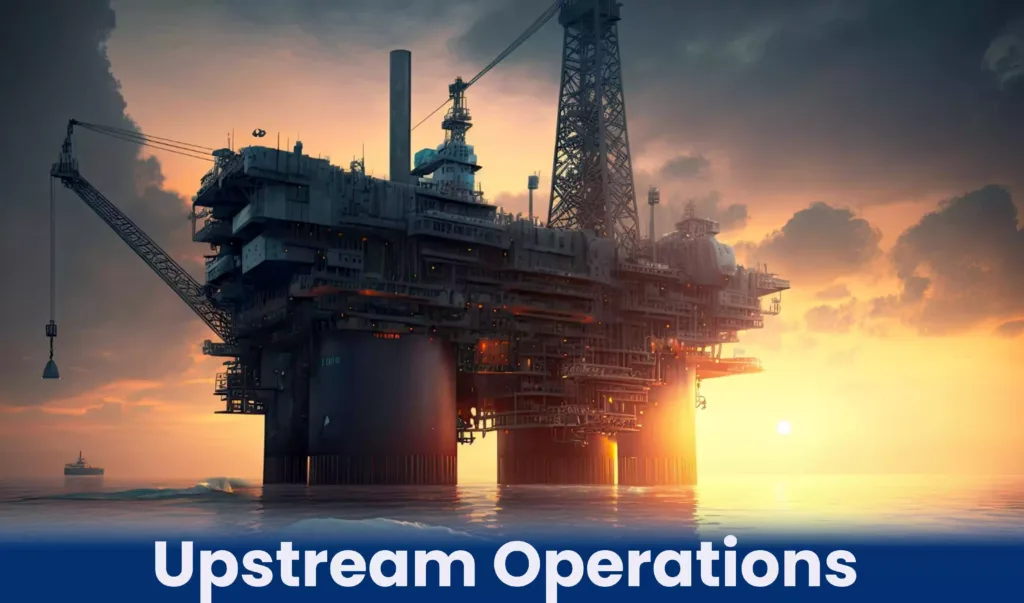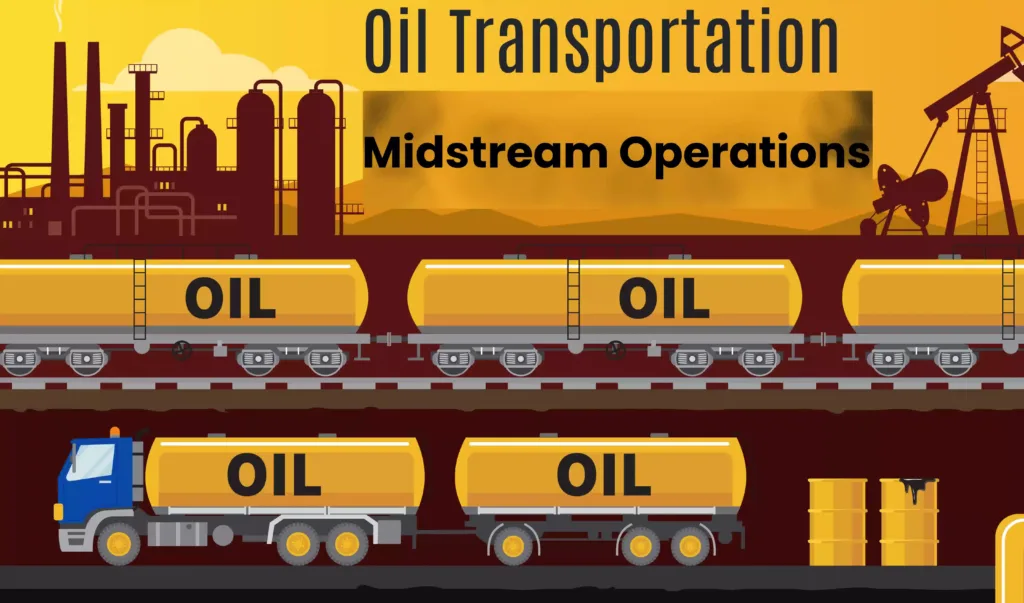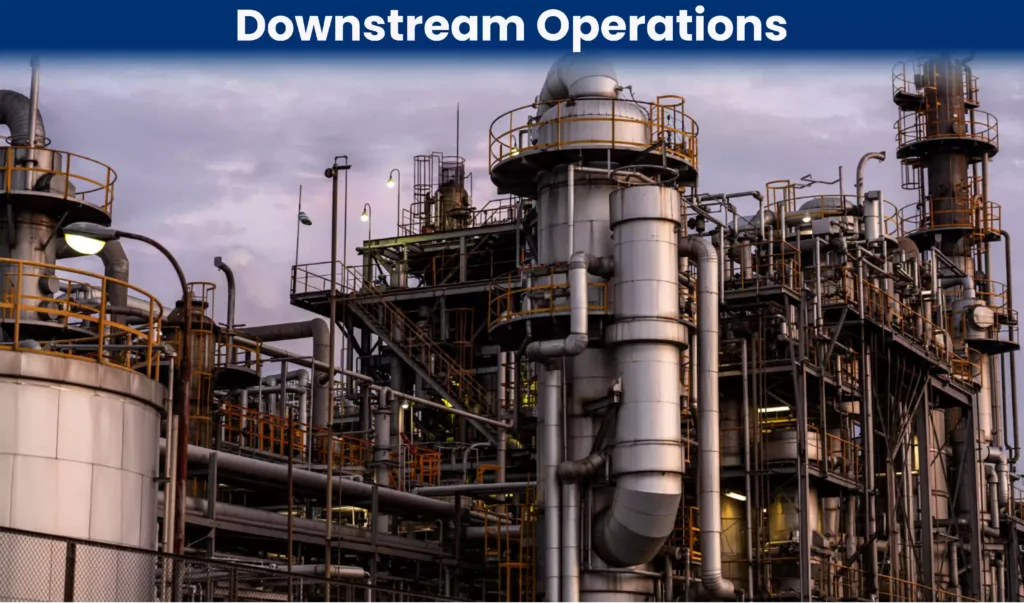Introduction to Upstream, Midstream, and Downstream Operations:
When we talk about upstream midstream downstream oil and gas, the oil and gas industry plays an important role in meeting global energy demands. From exploration and production to processing and distribution, this industry includes a wide range of activities that can be broadly classified into three main sectors: upstream, midstream and downstream.
Each sector plays a specific role in the overall supply chain, ensuring a continuous flow of energy resources. In this article, we will look at the specifics of each sector and find out how they contribute to the functioning of the oil and gas industry. You can visit SoNu SiNgH Refinery to learn various maintenance activities
1. Upstream Operations:
Upstream operations include activities related to the exploration, drilling and extraction of crude oil and natural gas resources. This field is primarily concerned with locating and accessing hydrocarbon reserves. Upstream operations can be further divided into three major phases:

a) Exploration: The initial phase involves identification and evaluation of potential oil and gas reserves. The process involves seismic surveys, geological analysis and exploratory drilling to estimate the presence and commercial viability of hydrocarbon reserves.
b) Drilling: Once the potential reservoir is identified, drilling operations are started to access the reserves. Advanced drilling techniques, including directional drilling and hydraulic fracturing, are employed to access hydrocarbon-bearing formations deep beneath the Earth’s surface.
c) Production: After successful drilling, the production phase begins, in which the focus is on extracting crude oil and natural gas from the reservoir. Various techniques, such as primary, secondary and tertiary recovery methods are employed to maximize production and recovery rates.
2. Midstream Operations:
Midstream operations involve the transportation, storage, and processing of crude oil and natural gas from production sites to refineries and other distribution points. The midstream sector ensures efficient movement of hydrocarbons through pipelines, tankers and storage facilities. Major components of the midstream operation include:

a) Transportation: Crude oil and natural gas are transported from production sites to refineries and processing plants through an extensive network of pipelines or specialized vessels such as tankers and liquefied natural gas (LNG) carriers. This ensures a safe and reliable supply of energy resources to downstream markets.
b) Storage: Midstream infrastructure includes storage facilities such as tanks, terminals and underground caverns. These facilities provide a buffer to balance fluctuations in supply and demand, ensuring a continuous flow of oil and gas products.
c) Processing: Midstream operations also involve processing raw crude oil and natural gas into refined products. Refineries use a variety of techniques such as distillation, cracking and blending to convert crude oil into valuable final products such as gasoline, diesel, jet fuel and petrochemical feedstock.
3. Downstream Operations:
Downstream operations are focused on the refining, distribution and marketing of petroleum products derived from crude oil. This sector involves converting finished products into finished goods and delivering them to end consumers. Key aspects of downstream operations include:

a) Refining: Refineries receive crude oil and process it into a range of refined products. It involves removing impurities, separating various hydrocarbon fractions and treating them to meet quality specifications. The refining process also involves the production of petrochemicals used in the manufacture of various consumer goods.
b) Distribution: Once refined, petroleum products are transported to distribution centers, fuel terminals and retail outlets. It includes an extensive network of pipelines, railroads, trucks and ships to ensure timely delivery of fuel and other derivatives to meet consumer demand.
c) Marketing and Retail: Downstream operations also include marketing and retail activities, including branding, advertising and sale of petroleum products through service stations, convenience stores and other outlets. Consumer-oriented services, such as fuel stations and lubricant sales, are an essential part of downstream operations.
conclusion:
The oil and gas industry is a complex and interconnected ecosystem consisting of upstream, midstream and downstream sectors. Upstream operations include exploration and production, midstream operations focus on transportation.
Download PDF for Mechanical Fitter & General Fitter Interview Questions
हिंदी में पढ़ें
परिचय:
तेल और गैस उद्योग वैश्विक ऊर्जा मांगों को पूरा करने में महत्वपूर्ण भूमिका निभाता है। अन्वेषण और उत्पादन से लेकर प्रसंस्करण और वितरण तक, इस उद्योग में कई प्रकार की गतिविधियाँ शामिल हैं जिन्हें मोटे तौर पर तीन मुख्य क्षेत्रों में वर्गीकृत किया जा सकता है: अपस्ट्रीम, मिडस्ट्रीम और डाउनस्ट्रीम। प्रत्येक क्षेत्र समग्र आपूर्ति श्रृंखला में एक विशिष्ट भूमिका निभाता है, जिससे ऊर्जा संसाधनों का निरंतर प्रवाह सुनिश्चित होता है। इस लेख में, हम प्रत्येक क्षेत्र की बारीकियों पर गौर करेंगे और पता लगाएंगे कि वे तेल और गैस उद्योग के कामकाज में कैसे योगदान करते हैं।
1. अपस्ट्रीम संचालन:
अपस्ट्रीम संचालन में कच्चे तेल और प्राकृतिक गैस संसाधनों की खोज, ड्रिलिंग और निष्कर्षण से जुड़ी गतिविधियाँ शामिल हैं। यह क्षेत्र मुख्य रूप से हाइड्रोकार्बन भंडार का पता लगाने और उन तक पहुँचने से संबंधित है। अपस्ट्रीम संचालन को आगे तीन प्रमुख चरणों में विभाजित किया जा सकता है:
a) अन्वेषण: प्रारंभिक चरण में संभावित तेल और गैस भंडारों की पहचान और मूल्यांकन शामिल है। इस प्रक्रिया में हाइड्रोकार्बन भंडार की उपस्थिति और वाणिज्यिक व्यवहार्यता का अनुमान लगाने के लिए भूकंपीय सर्वेक्षण, भूवैज्ञानिक विश्लेषण और खोजपूर्ण ड्रिलिंग शामिल है।
b) ड्रिलिंग: एक बार संभावित जलाशय की पहचान हो जाने के बाद, भंडार तक पहुंचने के लिए ड्रिलिंग ऑपरेशन शुरू हो जाता है। दिशात्मक ड्रिलिंग और हाइड्रोलिक फ्रैक्चरिंग सहित उन्नत ड्रिलिंग तकनीकों को पृथ्वी की सतह के नीचे गहरे हाइड्रोकार्बन-असर संरचनाओं तक पहुंचने के लिए नियोजित किया जाता है।
c) उत्पादन: सफल ड्रिलिंग के बाद, उत्पादन चरण शुरू होता है, जिसमें जलाशयों से कच्चे तेल और प्राकृतिक गैस निकालने पर ध्यान केंद्रित किया जाता है। उत्पादन और पुनर्प्राप्ति दर को अधिकतम करने के लिए विभिन्न तकनीकों, जैसे प्राथमिक, माध्यमिक और तृतीयक पुनर्प्राप्ति विधियों को नियोजित किया जाता है।
2. मिडस्ट्रीम संचालन:
मिडस्ट्रीम संचालन में उत्पादन स्थलों से रिफाइनरियों और अन्य वितरण बिंदुओं तक कच्चे तेल और प्राकृतिक गैस का परिवहन, भंडारण और प्रसंस्करण शामिल है। मध्यधारा क्षेत्र पाइपलाइनों, टैंकरों और भंडारण सुविधाओं के माध्यम से हाइड्रोकार्बन की कुशल आवाजाही सुनिश्चित करता है। मिडस्ट्रीम ऑपरेशन के प्रमुख घटकों में शामिल हैं:
a) परिवहन: कच्चे तेल और प्राकृतिक गैस को पाइपलाइनों या टैंकरों और तरलीकृत प्राकृतिक गैस (एलएनजी) वाहक जैसे विशेष जहाजों के व्यापक नेटवर्क के माध्यम से उत्पादन स्थलों से रिफाइनरियों और प्रसंस्करण संयंत्रों तक पहुंचाया जाता है। यह डाउनस्ट्रीम बाजारों में ऊर्जा संसाधनों की सुरक्षित और विश्वसनीय आपूर्ति सुनिश्चित करता है।
b) भंडारण: मिडस्ट्रीम बुनियादी ढांचे में टैंक, टर्मिनल और भूमिगत गुफाएं जैसी भंडारण सुविधाएं शामिल हैं। ये सुविधाएं आपूर्ति और मांग में उतार-चढ़ाव को संतुलित करने के लिए एक बफर प्रदान करती हैं, जिससे तेल और गैस उत्पादों का निरंतर प्रवाह सुनिश्चित होता है।
c) प्रसंस्करण: मिडस्ट्रीम संचालन में कच्चे कच्चे तेल और प्राकृतिक गैस को परिष्कृत उत्पादों में संसाधित करना भी शामिल है। रिफाइनरियां कच्चे तेल को गैसोलीन, डीजल, जेट ईंधन और पेट्रोकेमिकल फीडस्टॉक जैसे मूल्यवान अंतिम उत्पादों में बदलने के लिए आसवन, क्रैकिंग और मिश्रण जैसी विभिन्न तकनीकों का उपयोग करती हैं।
3. डाउनस्ट्रीम संचालन:
डाउनस्ट्रीम परिचालन कच्चे तेल से प्राप्त पेट्रोलियम उत्पादों के शोधन, वितरण और विपणन पर केंद्रित है। इस क्षेत्र में परिष्कृत उत्पादों को तैयार माल में परिवर्तित करना और उन्हें अंतिम उपभोक्ताओं तक पहुंचाना शामिल है। डाउनस्ट्रीम संचालन के प्रमुख पहलुओं में शामिल हैं:
a) रिफाइनिंग: रिफाइनरियां कच्चा तेल प्राप्त करती हैं और इसे परिष्कृत उत्पादों की एक श्रृंखला में संसाधित करती हैं। इसमें अशुद्धियों को दूर करना, विभिन्न हाइड्रोकार्बन अंशों को अलग करना और गुणवत्ता विनिर्देशों को पूरा करने के लिए उनका उपचार करना शामिल है। शोधन प्रक्रिया में विभिन्न उपभोक्ता वस्तुओं के निर्माण में उपयोग किए जाने वाले पेट्रोकेमिकल्स का उत्पादन भी शामिल है।
b) वितरण: एक बार परिष्कृत होने के बाद, पेट्रोलियम उत्पादों को वितरण केंद्रों, ईंधन टर्मिनलों और खुदरा दुकानों तक पहुंचाया जाता है। इसमें उपभोक्ता मांग को पूरा करने के लिए ईंधन और अन्य डेरिवेटिव की समय पर डिलीवरी सुनिश्चित करने के लिए पाइपलाइनों, रेलमार्गों, ट्रकों और जहाजों का एक व्यापक नेटवर्क शामिल है।
c) विपणन और खुदरा: डाउनस्ट्रीम संचालन में विपणन और खुदरा गतिविधियां भी शामिल हैं, जिनमें ब्रांडिंग, विज्ञापन और सर्विस स्टेशनों, सुविधा स्टोर और अन्य आउटलेट के माध्यम से पेट्रोलियम उत्पादों की बिक्री शामिल है। उपभोक्ता-उन्मुख सेवाएँ, जैसे ईंधन स्टेशन और स्नेहक बिक्री, डाउनस्ट्रीम संचालन का एक अनिवार्य हिस्सा हैं।
निष्कर्ष:
तेल और गैस उद्योग एक जटिल और परस्पर जुड़ा हुआ पारिस्थितिकी तंत्र है जिसमें अपस्ट्रीम, मिडस्ट्रीम और डाउनस्ट्रीम क्षेत्र शामिल हैं। अपस्ट्रीम ऑपरेशंस में अन्वेषण और उत्पादन शामिल है, मिडस्ट्रीम ऑपरेशंस परिवहन पर ध्यान केंद्रित करते हैं

Pingback: PIPING : The Powerful Lifeline of the Oil & Gas Industry in 2023 - PIPING PDF